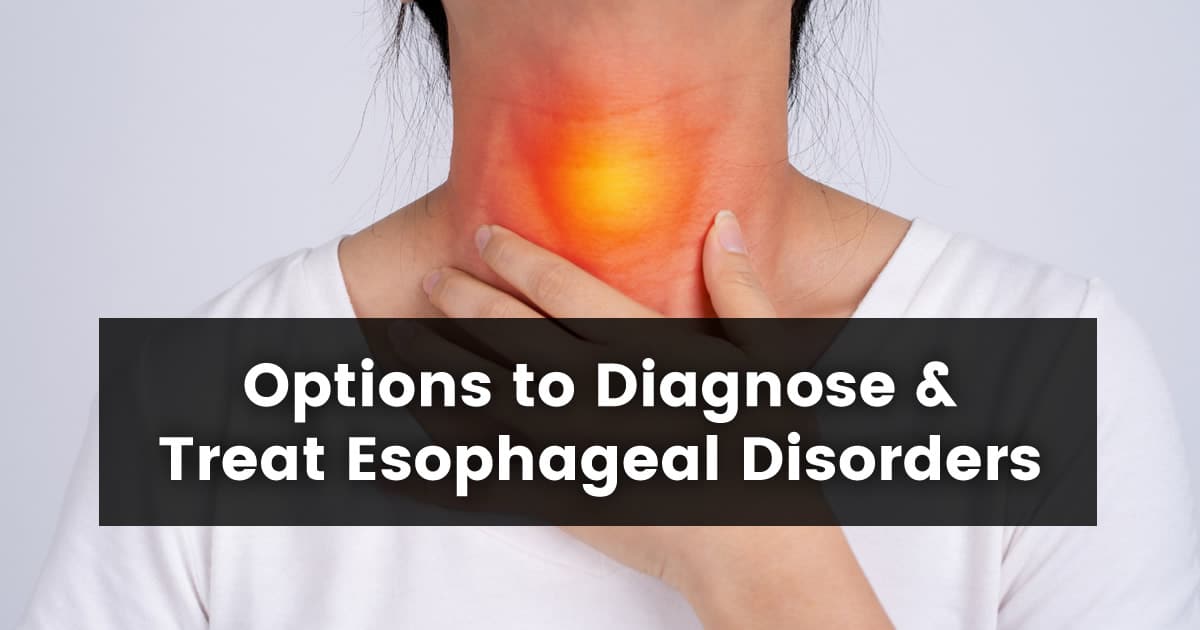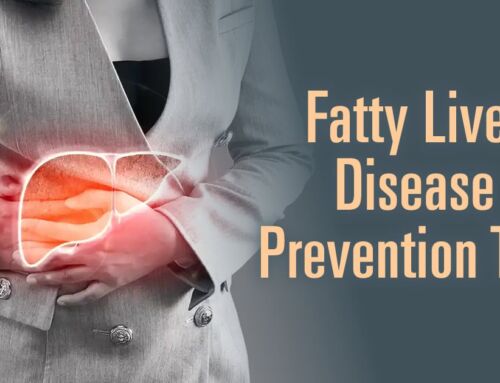Esophageal disorders affect the esophagus. This is the muscular tube that runs from the mouth to the stomach. Waves of muscular contractions push food and liquid down this tube.
The lower esophageal sphincter (LES), a muscular valve connecting the esophagus and stomach, relaxes to let food pass. This valve remains closed when not eating to prevent the stomach contents from flowing into the esophagus. In many cases, esophageal disorders disrupt this process and cause problems with eating and drinking.
This article will discuss types of esophageal disorders and their common symptoms. We’ll also highlight the diagnosis of esophageal disorders, including testing options. Lastly, we’ll outline the steps you can take to reduce your risk of esophageal disorders.
Types of Esophageal Disorders
Many medical conditions can affect your esophagus. Keep reading to learn more about the types of esophageal disorders.
GERD
GERD stands for gastroesophageal reflux disease. This chronic condition occurs when the LES doesn’t close properly. This can be due to the sphincter becoming loose or spontaneously relaxing.
The LES malfunction allows stomach acid to flow backward into the esophagus. With chronic acid reflux, the lining of the esophagus can become damaged. GERD can cause complications such as strictures, Barrett’s esophagus, and esophageal cancer if not treated. Treatment for GERD includes medication, dietary changes, and lifestyle modifications.
Barrett’s Esophagus
Barrett’s esophagus is a potential complication of GERD. In Barrett’s esophagus, the cells that line the esophagus transform into cells that usually line the small intestine. The lining of the esophagus in healthy people is light pink and flat. But with Barrett’s esophagus, the esophageal lining becomes thick and red.
Over time, the cells of Barrett’s esophagus can become precancerous. But most people with this condition never develop cancer. Treatment for Barrett’s esophagus may include radiofrequency ablation, endoscopic mucosal resection, cryotherapy, photodynamic therapy, and surgery.
Achalasia
Achalasia is a swallowing disorder that impacts up to 12 people per 100,000. This rare condition occurs when the muscles in the esophagus don’t work correctly, which impairs the movement of food down the esophagus. Achalasia also prevents the LES from relaxing at the right time. This malfunction can block food from entering the stomach.
The exact cause of achalasia is unknown. But it may be due to the degeneration of nerve cells, infection, or an autoimmune disorder. Treatments for achalasia focus on normalizing the contraction of muscles in the esophagus and relaxing the LES. This helps food move from the esophagus to the stomach.
Esophageal Cancer
Esophageal cancer is a cancerous tumor that starts in the esophagus. This type of cancer is the sixth most common cause of cancer-related deaths worldwide. Esophageal cancer originates in the inner lining of the esophagus and can spread to the outer layers as it grows.
Treatment for esophageal cancer focuses on surgically removing the cancer. Depending on the severity, treatment may also involve chemotherapy and radiation.
Esophageal Spasms
Esophageal spasms are painful muscle contractions that occur in the esophagus. Usually, spasms arise on an occasional basis. But more frequent spasms of the esophagus can cause difficulty swallowing food or liquid.
Normally, the muscles in the esophagus contract in a coordinated effort to move food into the stomach. But esophageal spasms can impair the ability to eat and drink. This may occur when the nerves that control the swallowing muscles don’t function properly. Treatment for esophageal spasms may include medication, surgery, and peroral endoscopic myotomy.
Esophageal Strictures
Esophageal strictures are abnormal tightenings of the esophagus. This can make it difficult for food or liquid to move down the esophagus. Esophageal strictures can form due to inflammation or scarring from conditions such as GERD, esophageal cancer, and ulcers.
The most common treatment for esophageal strictures is esophageal dilation. This procedure uses a balloon or dilator to expand the tightened area of the esophagus.
Common Symptoms of Esophageal Disorders
Depending on the disorder, symptoms can vary. But common symptoms of esophageal disorders include:
- Abdominal pain
- Acid reflux
- Chest pain
- Coughing
- Choking
- Difficulty swallowing
- Heartburn
- Hoarseness or wheezing
- Indigestion
- Regurgitation
- Sore throat
- Vomiting
- Unexplained weight loss
Diagnosing Esophageal Disorders
The diagnosis of esophageal disorders starts with a thorough medical history. This includes your current symptoms, past illnesses or surgeries, medications, and family history. From there, a physical exam of your neck and throat can check for abnormalities.
Depending on these findings, you may need testing to diagnose your condition. Diagnostic tests for esophageal disorders include:
- Upper endoscopy. This test uses an endoscope to examine the esophagus, stomach, and small intestine while under sedation. This test may also biopsy abnormal tissues for laboratory testing. An upper endoscopy can detect GERD, Barrett’s esophagus, and esophageal cancer.
- Esophageal manometry. This test measures the function of the muscles in the esophagus and LES using a small tube. The tube runs through your nose and into the esophagus and stomach. During this test, you swallow some liquid, and the sensors determine the strength and coordination of muscle contractions. Esophageal manometry can diagnose achalasia and esophageal spasms.
- Esophageal pH test. This test measures the stomach acid and pH levels in the esophagus using a thin tube or pH probe. An esophageal pH test can diagnose acid reflux and GERD based on how often stomach acid enters the esophagus.
- Barium x-rays. This test uses a chalky liquid called barium to outline the walls of the esophagus. Barium shows up white on x-ray film, which can help detect abnormalities such as esophageal cancer.
Reduce Your Risk of an Esophageal Disorder
Not all esophageal disorders are preventable. But lifestyle and diet modifications can reduce your risk of conditions such as GERD and its potential complications.
The following tips can help prevent certain esophageal disorders:
- Avoid eating close to bedtime
- Quit smoking
- Avoid excess alcohol consumption
- Eat smaller meals
- Avoid trigger foods for acid reflux
- Maintain a healthy weight
- Get regular exercise
- Eat enough fiber
If you experience any symptoms of esophageal disorders, you should contact your doctor. Receiving timely treatment can often prevent medical complications.
For more information about esophageal disorders or other digestive health conditions, call our office at 210-615-8308 or schedule an appointment online.






